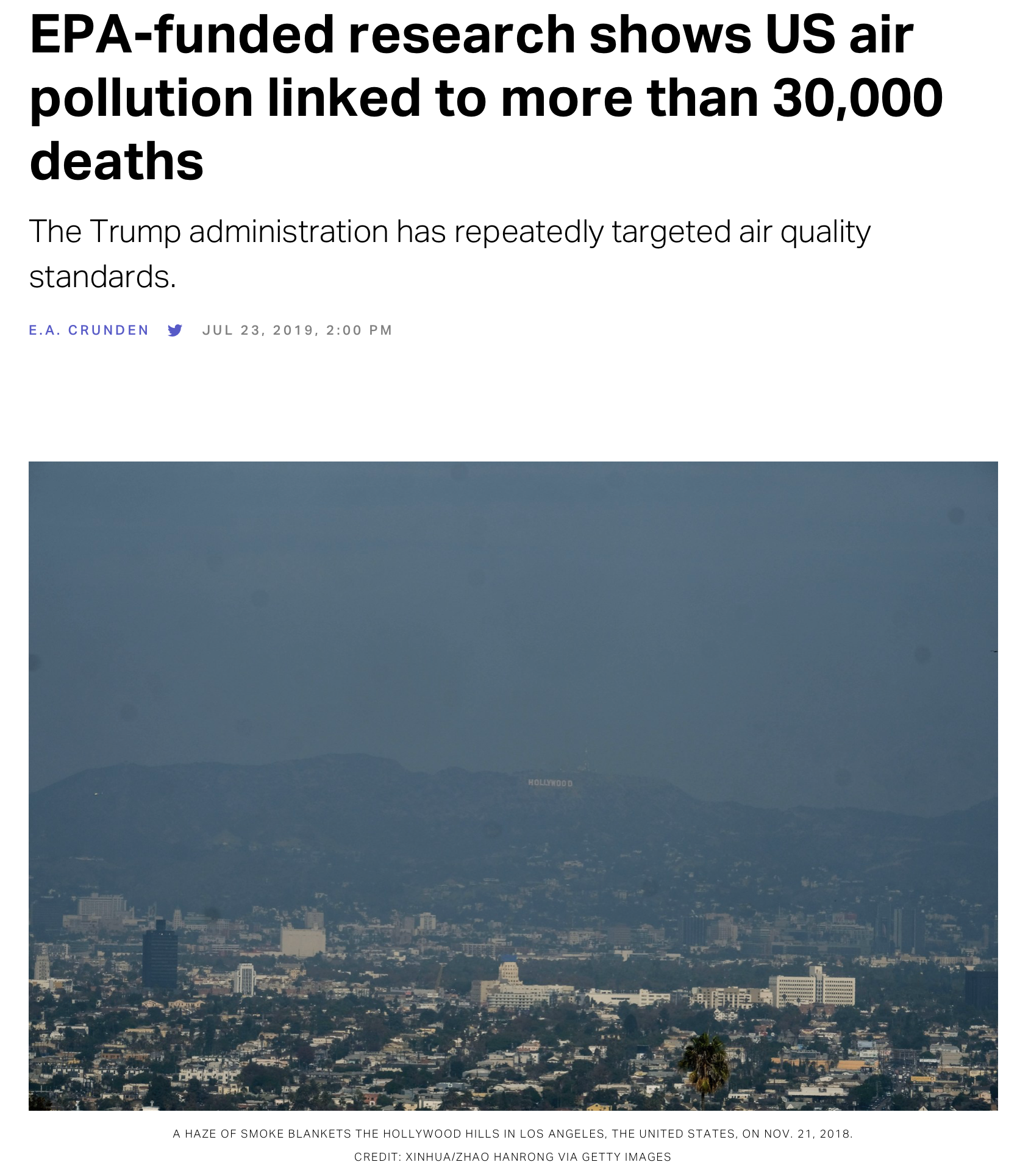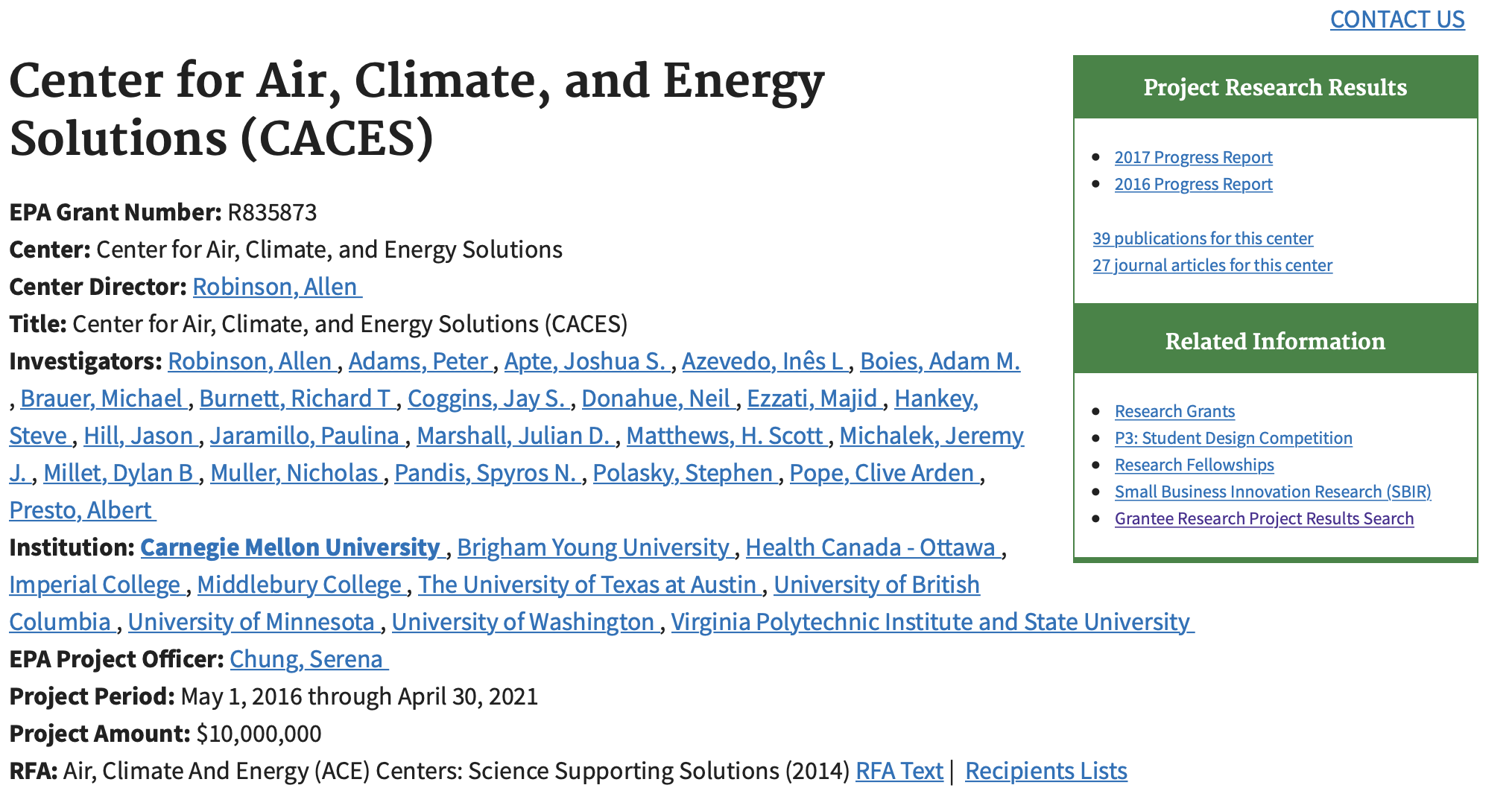Find out what a $10 million grant from the Obama administration can produce.

The media release is below. Click here for the study.
Here’s the key graph, showing that the more you adjust the poor quality data and crappy statistics with reality, the bogusly alleged association between PM2.5 and mortality vanishes to zero. We all know this already from “Scare Pollution.”

Past that, this bit of junk science was funded by the Obama administration to the tune of $10 million…. and is now being used to unjustly bash the Trump administration. All you need to know is that it was spearheaded by the infamous junk scientist C. Arden Pope, who once tried to explain that outdoor air is more deadly than smoking.
###
Air pollution in US associated with over 30,000 deaths and reduced life expectancy
IMPERIAL COLLEGE LONDON
Air quality in the US may be linked with increased mortality and reduced life expectancy according to research from Imperial College London and the Center for Air, Climate and Energy Solutions at Carnegie Mellon University.
The study, published in the journal PLOS Medicine, analysed concentrations of fine particles in the air, called PM2.5, across all counties in the contiguous USA (excluding Alaska and Hawaii) between 1999 and 2015.
These particles are mainly emitted from automobiles, power plants and industry, and known to be hazardous to health. The tiny particles, around 30 times smaller than the width of a human hair, can be inhaled deep into the lungs, and have been associated with increased risk of a range of conditions including heart attack and various forms of lung disease.
The amount of this fine particle pollution in the US has declined since 1999. The current US annual PM2.5 standard is set at 12 microgram per cubic meter of air (ug/m3). The highest concentration of PM2.5 during the study period was 22.1ug/m3, in 1999, Fresno County, California.
In 2015 the highest concentration was in Tulare County, California (13.2ug/m3), with the lowest amount recorded in Apache County, Arizona (2.8ug/m3).
However, the new research shows that at levels between 2.8ug/m3 and 13.2ug/m3 , which is mostly below the current standard, air pollution was associated with an estimated 15,612 deaths in females, and 14,757 deaths in men. The deaths were from cardiorespiratory conditions, which refers to heart and lung disorders (such as heart attack and various lung diseases including asthma).
These deaths would lower national life expectancy by 0.15 years for women, and 0.13 years for men. The life expectancy loss due to PM2.5 was largest around Los Angeles and in some southern states, such as Arkansas, Oklahoma and Alabama.
At any PM2.5 concentration, life expectancy loss was, on average, larger in counties with lower income than in wealthier counties.
Professor Majid Ezzati, lead author of the research from Imperial’s School of Public Health said: “We’ve known for some time that these particles can be deadly. This study suggests even at seemingly low concentrations – mostly below current limits – they still cause tens of thousands of deaths. Lowering the PM2.5 standard below the current level is likely to improve the health of the US nation, and reduce health inequality.”
He added: “US PM2.5 concentrations are generally lower than those in many Europe cities — which suggests there may also be substantial number of deaths in Europe associated with air pollution.”
In the study, the research team – all part of the Center for Air, Climate and Energy Solutions – assessed data from over 750 air quality monitoring stations from across the US, and combined this with other sources of air pollution data, such as satellite images.
The team then combined this with death counts from the National Center for Health Statistics. There were a total of 41.9 million deaths between 1999 to 2015 in the USA, with 18.4 million of these deaths from cardiorespiratory diseases, for which there is strong evidence of an association with air pollution.
Using a series of statistical models (the computer code for which is publicly available), the team combined all this data and estimated the increase in death rate per 1ug/m3 of PM2.5, and hence the additional deaths above the lowest recorded PM2.5 concentration of 2.8ug/m3.
The team factored in various factors that could affect the results, such as age, education, poverty and smoking rates. They could only indirectly account for other factors such as healthcare access and diet, that affect deaths in different counties.
###
The research was funded by the Environmental Protection Agency and the Wellcome Trust.
